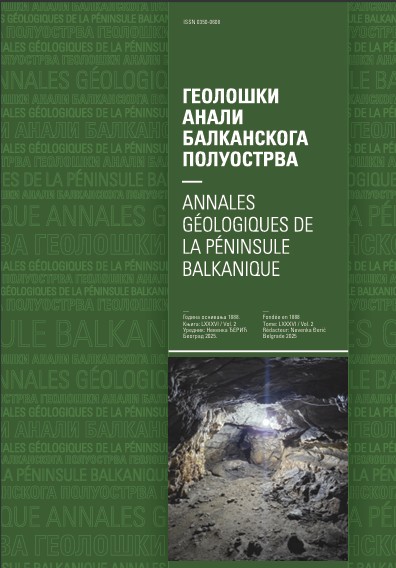Early-Middle Jurassic stepwise deepening in the transitional facies belt between the Adriatic Carbonate Platform Basement and Neo-Tethys open shelf in northeastern Montenegro evidenced by new ammonoid data from the early Late Pliensbachian Lavinianum Zone
Abstract
New ammonoid data prove an early Late Pliensbachian deepening event above the ?Late Hettangian-Sinemurian shallow-subtidal gray-reddish micro-oncoidal-foraminifera grainstone facies and the ?Early Pliensbachian deeper-marine micro-oncoidal-crinoidal-ammonoid wacke- to packstone facies. Based on the presence of Fuciniceras lavinianum (Fucini), Lytoceras ovimontanum Geyer and Arieticeratinae gen. indet. from a hardground above the deeper-water micro-oncoidal limestones in the Mihajlovici section (northeastern Montenegro) a Late Pliensbachian to Early Toarcian condensation horizon is proven. The Middle Toarcian ammonoid-bearing horizon also yielded species not known from previous studies: Calliphylloceras capitanii (Catullo), Harpoceras subplanatum (Oppel) and Furloceras aff. chelussii (Parisch & Viale), also described in the present paper. These new data prove a stepwise deepening of the depositional area during the Early and the Middle Jurassic reflected in detail in four sedimentary members: 1) ?Late Hettangian to Sinemurian/? earliest Pliensbachian open-marine shallow subtital micro-oncoidal limestone; 2) ?Early to Late Pliensbachian open-marine condensed limestones with few micro-oncoids and more open-marine influence; 3) Toarcian openmarine condensed red limestones with hardgrounds; and 4) condensed red nodular Bositra Limestone. These four members are separated by hardrounds representing Stratigraphie gaps in deposition. The stepwise deepening during the Early-Middle Jurassic follows the general trend of deposition as known in the whole Western Tethys Realm above the Late Triassic Dachstein Carbonate Platform.
Copyright (c) 2021 Geološki anali Balkanskoga poluostrva

This work is licensed under a Creative Commons Attribution 4.0 International License.










